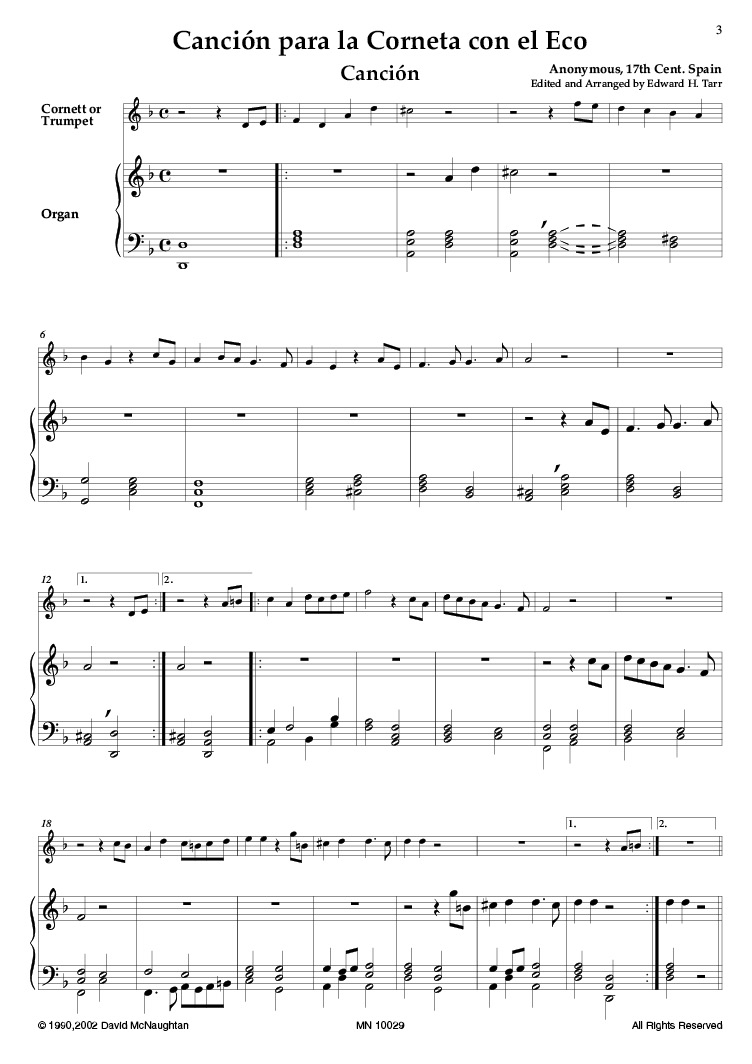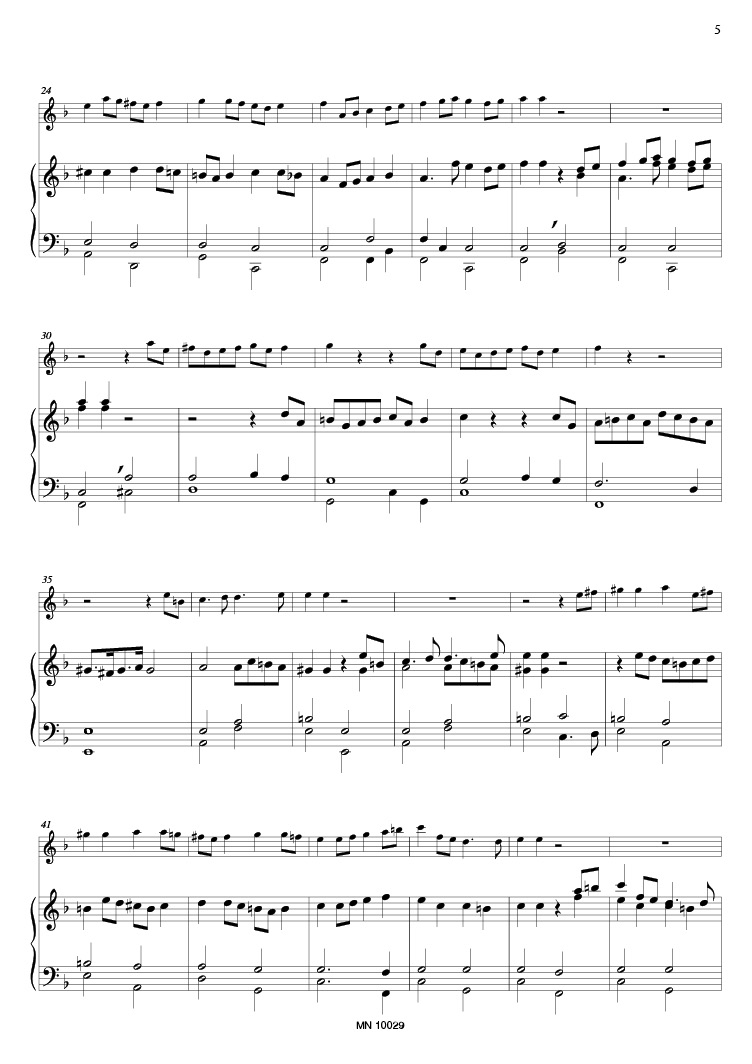
Anon/Tarr Canción para la Corneta con el Eco
Difficulty: IVParts: Cornetto/Trumpet in C, Organ
Series: Music from 17th and 18th Century Spain
Editor: Edward H. Tarr
On the Iberian peninsula, there was a rich mutual influence between the organ and wind instruments, including performances on solo wind instruments together with the organ, from the middle of the 15th. century onwards. For instance, during the Christmas and New Year celebrations at Guadalupe Abbey in 1576-77 for the Spanish and Portuguese kings Philip 11 and Sebastian, a solo cornettist performed several times with the organist, with and without singers. The scores and parts from which the musicians performed during this and other concerts and church services have been long lost. If we wish to revive this old performing tradition in our time, we must do some research.
As a result of my own research, besides the Canciónes de Clarines from the same manuscript (see below), which have also been published by mcnaughtan, are the present three movements. The word "Corneta" probably designates an organ register, although the imitation of the cornett (German "Zink", Italian "cornetto") cannot altogether be excluded. The somewhat melancholy nature of the piece seems to correspond perfectly to the character of that hybrid wind instrument, whose cupshaped mouthpiece and system of finger holes unite the characteristics of both brass and woodwind instruments. For performance today, besides the cornett, further instruments such as a trumpet, oboe or even clarinet could be recommended.
The source of this anonymous work is a four-volume manuscript collection collated between 1706 and 1709 by the Madrid organist Fra António Martin y Coil with the title of Flores de musica. interestingly enough, the composer of the first movement, the theme of which is varied in the second, is known: Jean-Baptiste Lully (1632-1687). The first movement of our work exists - as a pastoral love-song with the text "Sommes-nous pas trop heureux, belle Iris", by Isaac Benserade (1613-1691) - as the first piece after the overture of Lully's Ballet de Vimpatience, a work which was premiered on the 19th of February, 1661. In Lully's original version, the movement is a fifth lower. Lully's tune was variously transcribed and parodied, with both sacred and secular texts, in the 17th and 18th centuries. Even today, it lives on in the Danish hymnbook (Den danske Koralbog, No.370) with the text "Rind no up i Jesu navn" -- curious but true. The third movement of the present work, a lively "Corriente", is not to be found among Lully's compositions.
The old Spanish omementation practice was completely different from that of other countries, recognising four kinds of ornaments: redoble, quiebro, senzillo and glosas. The first three do not begin on the upper neighbor, but on the main note: trills in the modern sense, or in that of German Baroque music (Bach, Handel, Telemann), do not exist, even despite the occasional presence of a t. sign. A redoble is made on notes of long duration such as whole notes which are located at strategic points (usually at the beginning or end of a phrase); starting on the main note, it descends to the lower neighbor, touches the main note again and then the upper neighbor, before it either comes to rest on the main note or else first alternates a few times between main note and upper neighbor. The quiebro is generally applied to notes of shorter duration, and starting from the main note alternates twice either with its upper or lower neighbor before briefly coming to rest on the main note. Senzillos are short mordent-like alternations applied to rising or falling motifs: if the motif rises, the main note alternates with its lower neighbor, and vice-versa with falling motifs. Glosas are passagework.



